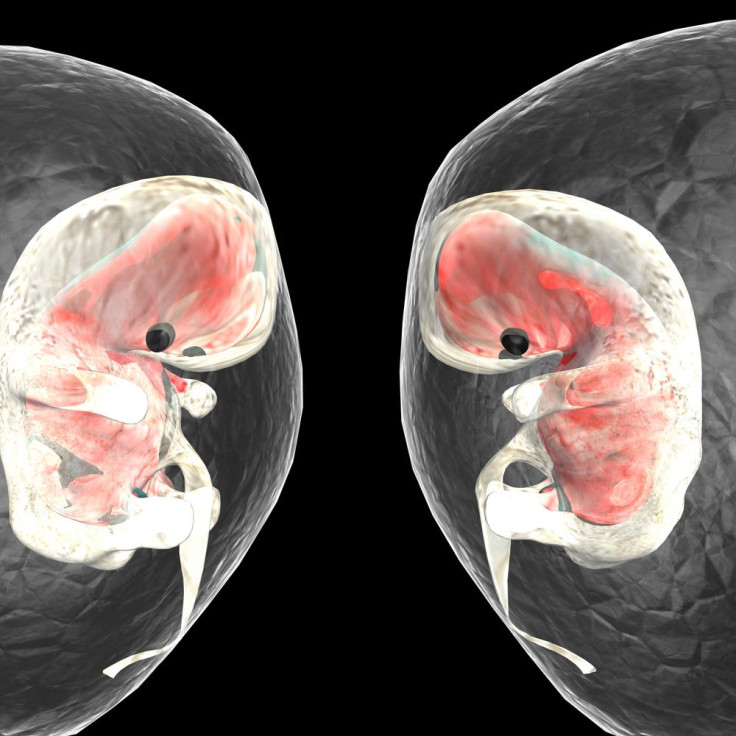Fetus In Fetu: The Fascinating (And Rare) Phenomenon Of Parasitic Twins

In June 1999, Sanju Bhagat, a 36-year-old farmer from Nagpur, India, was rushed to Tata Memorial Hospital in Mumbai after a growth in his abdomen began to press against his diaphragm, making it difficult for him to breathe. During his operation, however, his surgeon Dr. Agay Mehta was shocked when he reached into Bhagat’s belly expecting to remove a tumor but found himself holding the hand of Bhagat’s dead parasitic twin instead. The case made headlines throughout the world and Bhagat became one of only about 100 cases ever to have the bizarre condition known as fetus in fetu.
A History Of Fetus in Fetu
German anatomist Johann Friedrich Meckel was the first to describe fetus in fetu in the late 18th century. Although scientists speculated that fetus in fetu was the result of a highly developed teratoma, a tumor made up of out-of-place tissue, such as teeth and bone, Meckel realized the growth was in fact an underdeveloped twin. Usually, both twins from parasitic pregnancies die before birth, but sometimes the parasitic twin can remain in its host twin for years after delivery.

According to The Embryo Project Encyclopedia, in order to be classified as a fetus in fetu and not a teratoma, a growth must display evidence of body plan organization, such as having vertebrae, limb buds, or organ tissue. Bhagat’s parasitic twin had feet and hands complete with long fingernails. Although the condition is not deadly, the parasitic twin can grow large enough to become a hindrance to the host, as was the case with Bhagat. How Stuff Works reported that about 90 percent of fetus in fetu cases were found in babies and removed before it became a problem. Once the parasitic twin is removed, the host, regardless of their age, is usually fine.
The 'Other' Type Of Twin
Twins are among the most interesting natural occurrences on the planet and have been fascinating doctors for centuries because of their rarity. According to the Centers for Disease Control and Prevention’s latest figures, only 33.7 per 1,000 live births in America result in twins.
Most of us are familiar with the two different types of twins: fraternal and identical. Fraternal twins grow when two different eggs are fertilized by two different sperm cells, and subsequently develop simultaneously in their mother’s womb. These types of twin births often run in families, and a woman is more likely to conceive fraternal twins if she is one herself or has siblings who are fraternal twins. Assisted reproductive techniques and conception over the age of 30 also increase women’s chances of conceiving this type of twin.

Identical twins are a bit more rare and grow when a single fertilized egg splits into two during an early stage of pregnancy. Even rarer, conjoined or siamese twins grow when this split isn’t completed. And most rare, fetus in fetu occurs when, instead of splitting, one fetus becomes trapped inside the other. Once it’s cut off from its mother’s blood supply, the enclosed fetus eventually dies and becomes what’s known as a parasitic twin. This is because it still contains an umbilical cord-like structure, which keeps it in contact with its host’s blood supply, allowing it to continue growing — sometimes even after its host’s birth, according to ABC News.
Sometimes, its not just one twin that gets absorbed into its host, but multiple bodies. This happened in China in 2010, when a 9-pound baby girl was discovered to be “pregnant” with twins. The twins turned out to be her long-lost triplet siblings, who she had absorbed while still in the womb, a study on the case explained. Each fetus had four limbs, a spine, a rib cage, intestines, and an anus. They were located between her liver and left kidney, and were surgically removed when she was 3 weeks old.



























